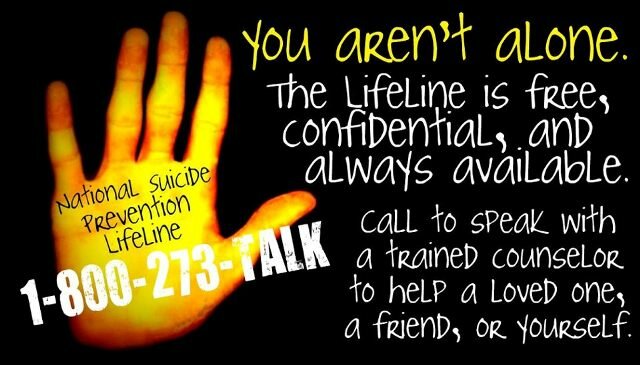
Para llamadas en Espanol: 1-888-628-9454
Warning Signs of Suicide
These signs may mean someone is at risk for suicide. Risk is greater if a behavior is new or has increased and if it seems related to a painful event, loss or change.
- Talking about wanting to die or to kill oneself.
- Looking for a way to kill oneself, such as searching online or buying a gun.
- Talking about feeling hopeless or having no reason to live.
- Talking about feeling trapped or in unbearable pain.
- Talking about being a burden to others.
- Increasing the use of alcohol or drugs.
- Acting anxious or agitated; behaving recklessly.
- Sleeping too little or too much.
- Withdrawn or feeling isolated.
- Showing rage or talking about seeking revenge.
- Displaying extreme mood swings.
- Preoccupation with death.
- Suddenly happier, calmer.
- Loss of interest in things one cares about.
- Visiting or calling people to say goodbye.
- Making arrangements; setting one’s affairs in order.
- Giving things away, such as prized possessions.
What You Can You Do
Source: Mental Health America of Texas-Suicide Prevention
- ASK about suicide
- Seek more information and keep safe
- Know where and how to refer (take action)
ASK About Suicide
If you suspect that someone you know is thinking about suicide, the best way to approach the situation is to ask.
- Indirect- Sometimes when people are sad, as you are, they think about suicide. Have you ever thought about it? Do you want to go to bed and never wake up?
- Direct – Have you thought about suicide? Do you want to kill yourself? Are you thinking about suicide?
- Always ASK – it is the most important step. If you cannot do it, find someone who can.
Seek More Information
- Seek a private area to talk. Seek to establish a relationship. Comment on what you see and observe non-judgmentally. Be curious about their perceived problem; find out how long they’ve thought about suicide, if they’ve attempted suicide in the past and if they tried to get help.
- Seek to find out if they are at immediate high risk of suicide (have a plan or are rehearsing it in their mind and/or have a gun, access to pills or other means). Take immediate steps to limit access to means and assure safety if needed. Be sure to be aware of your own non-verbal reactions and tone of voice.
- Help ensure the person’s safety and/or help them start to implement a safety plan – a list of people they can call when feeling suicidal. Find out who and where they normally go to for help (family, friends, pastor, neighbor, roommate, girl/boy friend). Find out if they have a regular doctor, mental health provider or counselor
- With immediate risk of suicide call 911 or get the person to the nearest hospital emergency room.
Know How And Where To Refer
- Know where to refer nationally, in Texas and in your area, your school or your community.
- National Suicide Prevention Lifeline 1-800-273-8255. Save this number to save a life.
- Texas Crisis Line Options – All MHMRs/LMHAs in Texas are required to provide a 24-hour crisis line for their service area (which may be a county or a region of counties) and these lines are required to be certified by the American Association of Suicidology. To find the number to the MHMR crisis line closest to you, log onto the DSHS website, http://www.dshs.texas.gov/mhsa-mh-help/.
- Other Local resources: hospitals, law enforcement, mobile outreach crisis teams.
- If someone is in immediate risk, do not leave him or her alone. Call 911 for a mental health deputy or officer to transport a person and/or take the person to the nearest hospital emergency room.
Visit our Crisis Resource page for more information about local resources.
Resources and Information
- I need help | My friend needs help | My son/daughter/student needs help
- Apps and online resources for prevention in Texas.
- Know the Warning Signs of Suicide from the American Association of Suicidology.
- American Foundation for Suicide Prevention Frequently Asked Questions
- Youth Suicide from the Centers for Disease Control and Prevention
- National Suicide Prevention Week
For local resources, visit our Crisis Resource page.
Did you know?
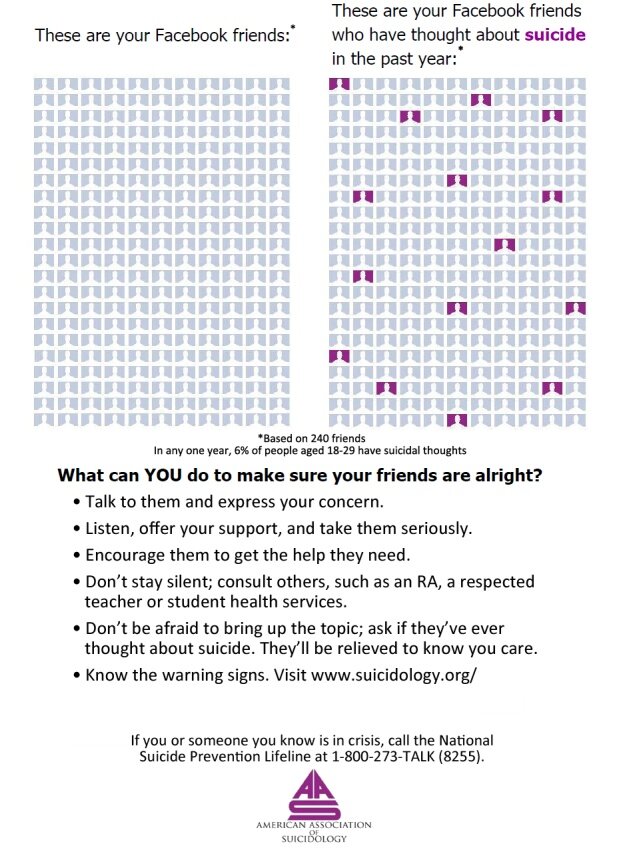 |
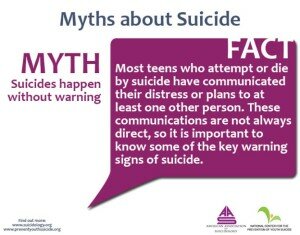 |
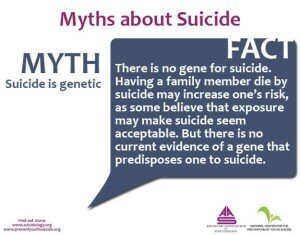 |
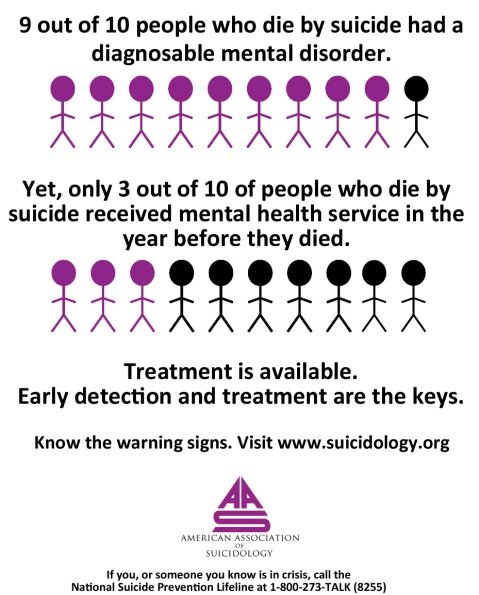 |
Fact Sheets
- Mental Health Facts PDF
Suicide is the 10th leading cause of death in the U.S. (more common than homicide) and the 2nd leading cause of death for people aged 15-24 after accidents. - Mental Health Facts Children & Teens PDF
More than 90% of children who die by suicide have a mental health condition. - 2012 Veteran Report
Each day an estimated 22 veterans die by suicide. - USA 2013 Suicide Data
Each suicide intimately affects at least 6 other people. - Find the most recent annual suicide data here.
Videos
Mayo Clinic’s Teen Suicide Prevention Video
“Reach Out” music video
